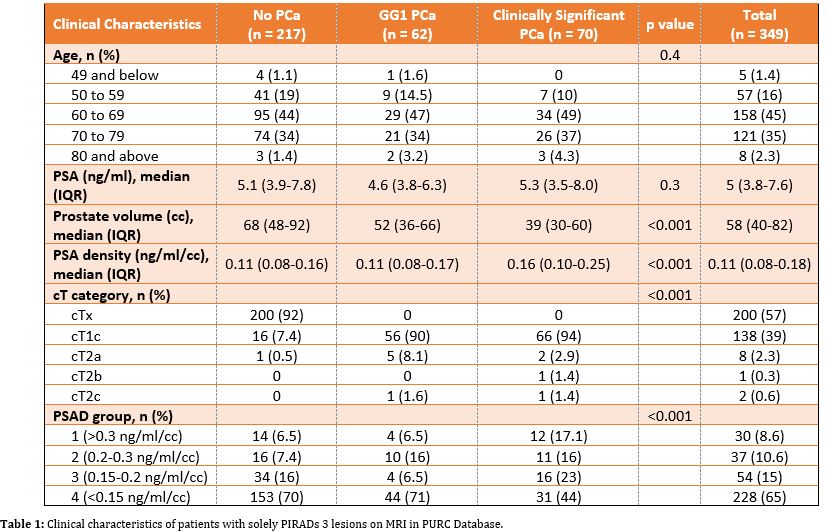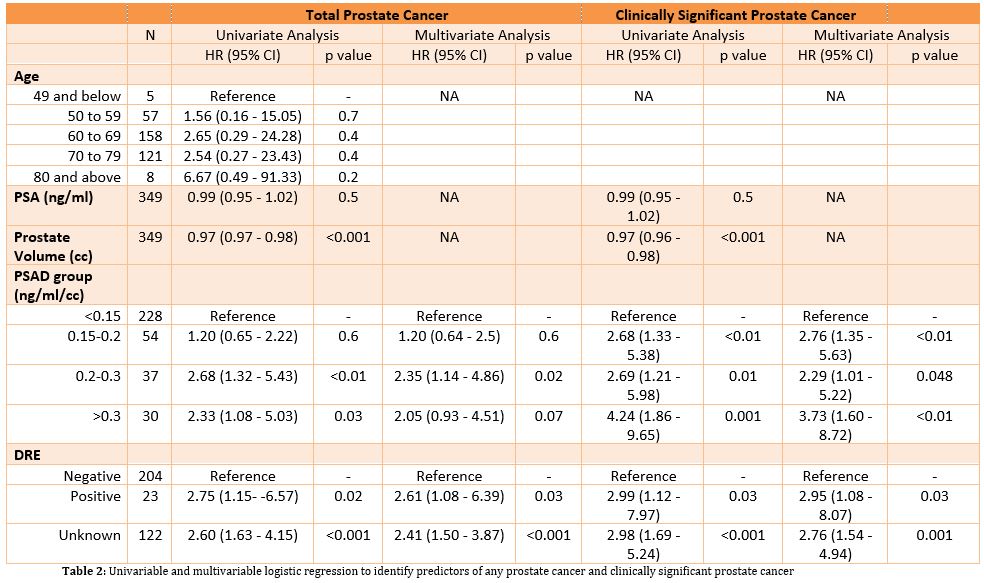Back
Poster, Podium & Video Sessions
Podium
PD41: Prostate Cancer: Detection & Screening IV
PD41-10: The Utility of PSA Density in Patients with PI-RADs 3 Lesions Across a Large Multi-Institutional Collaborative
Sunday, May 15, 2022
11:00 AM – 11:10 AM
Location: Room 255
Johnathan Drevik*, Zafardjan Dalimov, Kaynaat Syed, Philadelphia, PA, John Danella, Danville, PA, Laurence Belkoff, Adam Reese, Philadelphia, PA, Jeffrey Tomaszewski, Camden, NJ, Edouard Trabulsi, Philadelphia, PA, Eric Singer, New Brunswick, NJ, Bruce Jacobs, Pittsburg, PA, Jay Raman, Hershey, PA, Thomas Guzzo, Andres Correa, Marc Smaldone, Robert Uzzo, Serge Ginzburg, Philadelphia, PA

Johnathan A. Drevik, MD
Einstein Healthcare Network
Podium Presenter(s)
Introduction: Prostate MRI detecting PI-RADs = 3 lesions has low diagnostic utility. Use of PSA density has been suggested to further risk-stratify these men, to potentially avoid biopsies in favor of monitoring. We evaluate the ability to PSA density (PSAd) to risk-stratify PIRADs 3 lesions across patients who underwent a biopsy in a large multi-institutional collaborative.
Methods: Pennsylvania Urology Regional Collaborative (PURC) is a voluntary quality improvement collaborative of 11 academic and community urology practices in Pennsylvania and New Jersey. A retrospective analysis was performed on all patients in the PURC database that had a prostate MRI with PI-RADs 3 lesions only. PSA just prior to the MRI and prostate size reported on MRI were used to calculate the PSAd. Clinicopathologic data were evaluated. Univariable analysis using Chi-Square and Kruskal Wallis tests and multivariable logistic regression were used to identify predictors of total and clinically significant prostate cancer (csPCa) defined as > Grade Group 2 (GG2.)
Results: Between May 2015 and March 2021, 349 patients with only PIRADs 3 lesion(s) were identified and comprised the cohort of interest. Clinicopathologic characteristics are summarized in Table 1. Significant prostate cancer was detected in 70/349 (20.0%) of men. Smaller prostate volume, abnormal DRE, and higher PSAd were significantly associated with clinically significant prostate cancer. In men with PSAd <0.15, 31/228 (13.6%) harbored csPCa. Multivariable analysis confirmed that men with PSAd >0.15 were more likely to harbor clinically significant prostate cancer (p < 0.001, Table 2).
Conclusions: Across a large regional collaborative, patients with a PIRADs 3 lesions on mpMRI were noted to have clinically significant cancer in 20%. Using PSA density cut-off of 0.15 to further risk stratify these patients may result in missing clinically significant prostate cancer in 13.6%.
Source of Funding: None


Methods: Pennsylvania Urology Regional Collaborative (PURC) is a voluntary quality improvement collaborative of 11 academic and community urology practices in Pennsylvania and New Jersey. A retrospective analysis was performed on all patients in the PURC database that had a prostate MRI with PI-RADs 3 lesions only. PSA just prior to the MRI and prostate size reported on MRI were used to calculate the PSAd. Clinicopathologic data were evaluated. Univariable analysis using Chi-Square and Kruskal Wallis tests and multivariable logistic regression were used to identify predictors of total and clinically significant prostate cancer (csPCa) defined as > Grade Group 2 (GG2.)
Results: Between May 2015 and March 2021, 349 patients with only PIRADs 3 lesion(s) were identified and comprised the cohort of interest. Clinicopathologic characteristics are summarized in Table 1. Significant prostate cancer was detected in 70/349 (20.0%) of men. Smaller prostate volume, abnormal DRE, and higher PSAd were significantly associated with clinically significant prostate cancer. In men with PSAd <0.15, 31/228 (13.6%) harbored csPCa. Multivariable analysis confirmed that men with PSAd >0.15 were more likely to harbor clinically significant prostate cancer (p < 0.001, Table 2).
Conclusions: Across a large regional collaborative, patients with a PIRADs 3 lesions on mpMRI were noted to have clinically significant cancer in 20%. Using PSA density cut-off of 0.15 to further risk stratify these patients may result in missing clinically significant prostate cancer in 13.6%.
Source of Funding: None

.jpg)
.jpg)